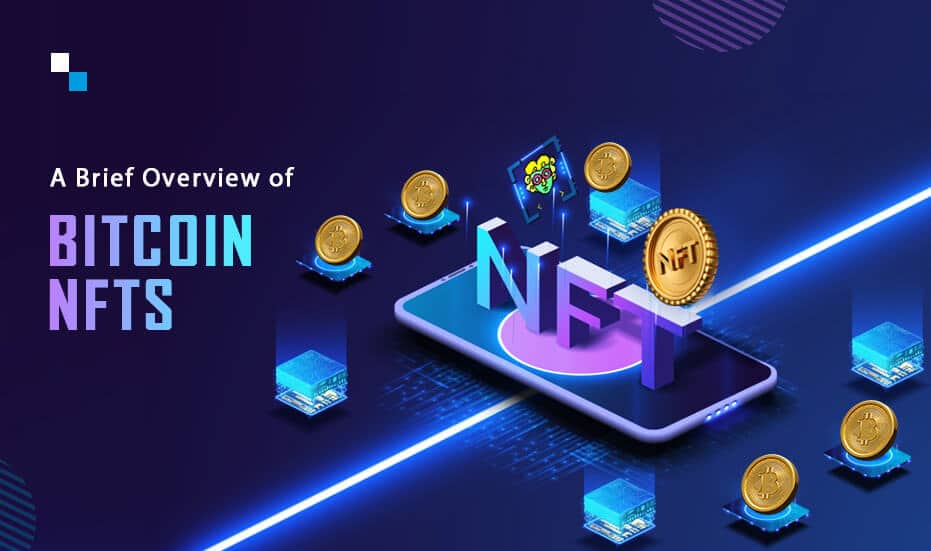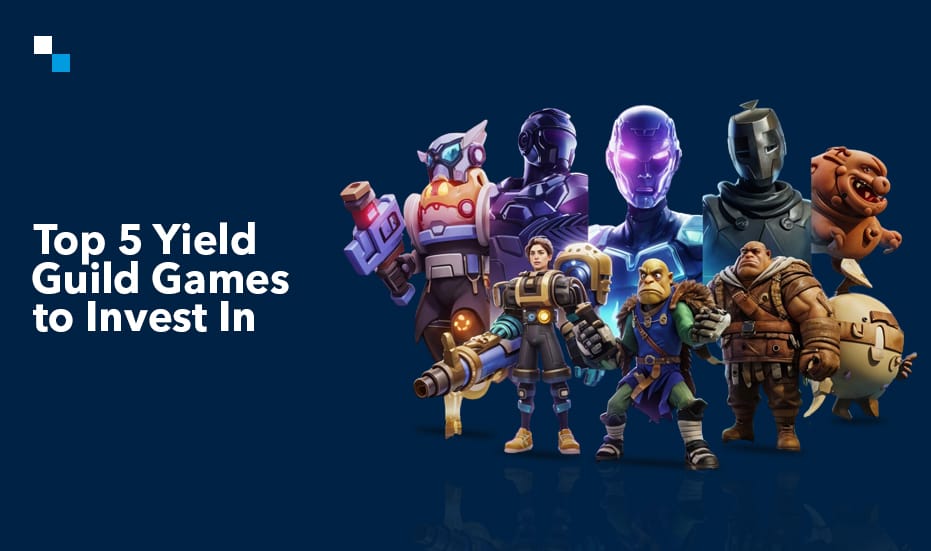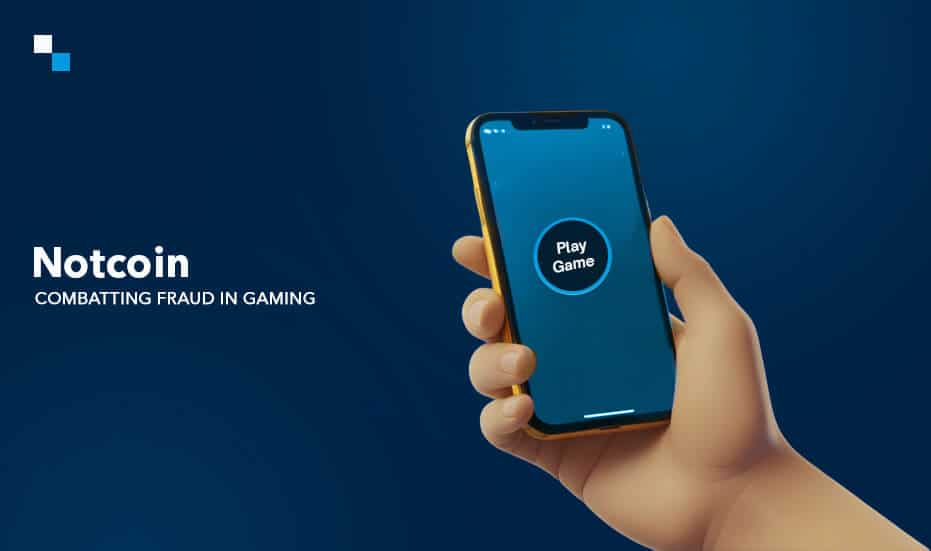
Blockchain Healthcare Solutions: An Overview of Challenges & Solutions
May 5, 2023
Real-Life Use Cases of NFT Marketplace
May 8, 2023Bitcoin and NFTs have been the two buzzwords in recent times. These terms have become so common that they can be heard every now and then.
But wait!
Have you heard about Bitcoin NFTs? Does the term sound new? What is it all about?
Seems confusing!
No worries at all! Here we are to help you out on the same.
However, before we delve deeper into the topic of Bitcoin NFTs, let us briefly understand the terms Bitcoin and NFT separately.
Brief Introduction to Bitcoin and NFT
Bitcoin
Bitcoin is a decentralized digital currency that can be used for peer-to-peer transactions and functions without the control or approval of any central authority such as the government or financial institutions. In contrast to fiat currency, the currency is created, traded, distributed, and stored using a decentralized ledger system referred to as a blockchain.
The blockchain network on which Bitcoin is built comes with the benefit of fund transaction verification, thereby facilitating an advanced algorithm to appropriately manage the formation of monetary units. Every Bitcoin transaction is monitored on the blockchain. Bitcoin and its distributed ledger are completely secured by PoW or proof-of-work consensus, which is also referred to as the process of mining which helps introduce new bitcoins into the network.
NFT
Non-fungible tokens, which are very commonly referred to as NFT are nothing but digital watermarks that can be used for establishing ownership and provenance of a wide range of assets such as songs, image files, tweets, physical assets, and other digital formats. NFTs are usually created using the same type of programming as used in the case of cryptocurrencies and hence happen to be a unique digital identifier that is recorded in a blockchain. It is a unique as well as non-interchangeable data unit stored on a digital ledger using blockchain technology for establishing proof of ownership.
Stating in simple terms NFTs are cryptographic assets that are based on blockchain technology and each of them comes with unique identification codes and metadata which helps distinguish one NFT from another. Therefore, they can neither be exchanged nor be traded like all other cryptographic assets Moreover, these codes play a significant role in making the process of transferring tokens between owners and establishing true ownership much more effective & efficient.
Now, readers have a better understanding of what Bitcoin and NFTs are. So, let us delve deeper and know more about Bitcoin NFTs.
What are Bitcoin NFTs?
Bitcoin NFTs have created a storm in the world of crypto within the blink of an eye and have captured its attention pretty fast. It has opened up a lot of opportunities for the oldest blockchain as well as digital art enthusiasts. In the year 2020 when the NFTs exploded, they were majorly traded & minted typically on platforms based on the Ethereum blockchain along with others like Solana and Cardano. Therefore, the NFTs we generally see are Ethereum-based tokens. However, the latest buzz is all around Bitcoin NFTs which are also referred to as Ordinal NFTs, Bitcoin Ordinals, or simply Ordinals.
Now, the question might arise in the mind of the readers: what are Ordinals? Let’s find out!
Ordinals are serial numbers that are imprinted in a single unique sat or satoshi, which happens to be the smallest unit of Bitcoin. The serial numbers are assigned via the ordinal theory in the order of their mining. The first sat in the first block has the number 0 as its ordinal number, the second sat has 1 as the ordinal number, and the last sat of the first block has 4,999,999,999 as its ordinal number.
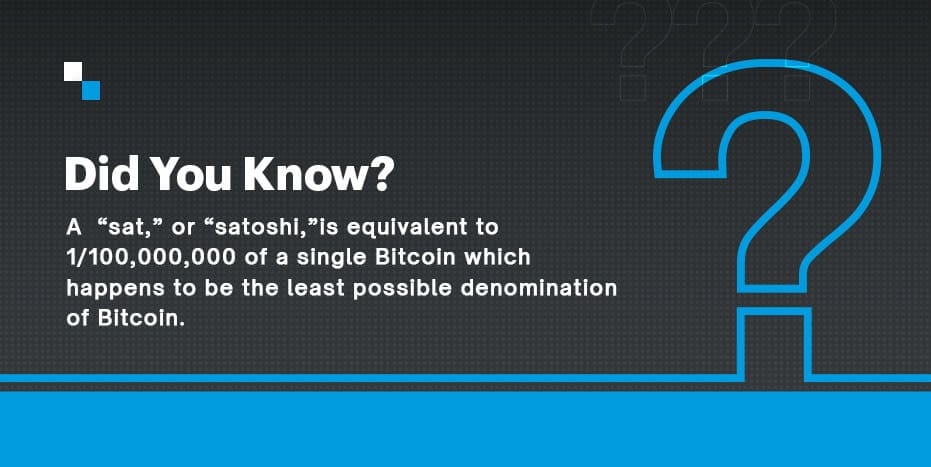
The new protocol of Ordinals came into existence in January 2023 which was a result of the introduction of inscriptions on Bitcoin’s Mainnet, thereby facilitating the creation of Ordinals, which are actually NFTs on Bitcoin. The inscription is referred to as the process of assigning assets to individual satoshis. Inscriptions happen to be digital artifacts that are native to the Bitcoin blockchain. Yuga Labs, the largest issuer of NFTs in the world had already announced the creation of TwelveFold in February 2023, which is a new collection of NFTs issued on Bitcoin, thereby inscribing Bitcoin NFTs and affirming their success.

Working Process of Bitcoin NFT
After you know what Bitcoin NFTs are, you might be very curious to know how Bitcoin NFT works.
No worries at all!
Here we are to discuss the working process of Bitcoin NFTs in a detailed manner.
If you wish to understand Bitcoin NFTs’ working process, it becomes immensely important to understand the difference between ordinals and inscriptions, since both of these are used to refer to Bitcoin NFT.
Ordinals happen to be a system for ordering satoshis or sats in such a way that it gives rise to the non-fungible property required for creating non-fungible tokens or NFTs.
On the other hand, inscriptions refer to the contents of the Bitcoin NFT itself such as the text, image, video, or any other random data that any user will be considering compatible with an NFT.
Bitcoin NFTs can be ideally understood by drawing a parallel to non-Bitcoin NFTs that happen to be unique tokens usually possessing two components –
- TokenID
- Metadata
TokenID
Fungible tokens happen to be interchangeable in nature. For instance, we cannot differentiate between two Ethereum coins just like it is not possible to differentiate between two dollars.
TokenIDs play a significant role in providing the tokens with the non-fungible tag, thereby giving each one of them a unique barcode that helps easy differentiation among tokens. A tokenID is exactly what makes every NFT functionally unique.
“Interesting Fact”
“NFTs might have the same tokenID if they are created by different smart contracts. However, in this regard, the smart contract plays the role of a differentiator in distinguishing one NFT from another. “
Ordinal Theory as TokenID for Bitcoin NFTs
Bitcoin is fungible in nature which means it is not possible to differentiate between any two Bitcoins. It is exactly the situation where ordinal theory comes to the rescue. The key factor for Bitcoin NFTs or ordinal NFTs is that they provide a numbering system for every individual satoshi or sat which results in creating a unique ID for each satoshi or sat on the Bitcoin blockchain. Every ordinal in its most fundamental form happens to be simply a satoshi possessing a unique number.
Let us understand how it works!
In the ordinal theory, every sat is numbered in its minting order. In the year 2008, the first ever sat was minted which was the first ordinal. At the time when a sat is transferred, the order is kept intact via a first-in-first-out system depending upon the transaction order. Bitcoin’s fungibility nature is not violated by the Ordinal theory. The Bitcoin protocol conventionally does not realize this novel ordering of sat. However, an ordinal enthusiasts’ community has simply chosen to collectively ascribe significance to this ordinal numbering system and develop tools that honor it.
Metadata
Metadata happens to be the optional attachment of random data to an NFT in the case of non-Bitcoin blockchains. It is used to depict the vast range of in-game assets, financial assets, art, profile pictures, and a number of others that can be synonymous with NFT.
Inscriptions as Metadata for Bitcoin NFTs
Bitcoin NFTs do not possess a specific spot for metadata like their non-Bitcoin counterparts. Instead, the metadata for Bitcoin NFTs is held within the transaction’s witness data. It is where the term inscription comes from the attached data to a particular sat is inscribed within that particular part of a Bitcoin transaction.
It is required for the users to send individual sat’s transactions to a wallet compatible with Taproot and attach the intended as the transaction’s part for the purpose of inscribing a particular sat with data and creating a Bitcoin NFT. In addition to this, users also need to be careful of the ordering of the transaction to make sure that the intended sat is not used as a network fee.
Ways to Mint Bitcoin NFT
Now that you have a fair idea about Bitcoin NFTs and their working process, let us delve a bit deeper into the topic to understand how Bitcoin NFTs can be minted.
There are two methods to mint a Bitcoin NFT.
Method 1
The first method of inscribing Bitcoin NFTs or Ordinals requires some technical knowledge. It is needed to run a full Bitcoin node and then install Ordinals on this node to inscribe sat (satoshis) into the Ordinals wallet for the creation of Bitcoin NFT or Ordinal.
Ordinals can be processed Bitcoin wallets by fulfilling the following two conditions –
- The wallets need to be compatible with Taproot.
- The wallets need to have the potential of “coin control” so that spending the network fees with Ordinal satoshis or unintentionally sending them in another transaction can be avoided.
Sparrow Wallet and Ordinal Wallet are used to process Bitcoin NFTs or Ordinals. However, the Sparrow Wallet is recommended only for receiving Ordinals so that unintentional sending of Ordinal satoshis can be avoided. Running a full node is not needed while using the Sparrow Wallet. On the other hand, an Ordinal Wallet needs a full node with a capacity of 500 GB. In contrast to the Sparrow Wallet an Ordinal Wallet permits the creation of inscriptions and holds the inscribed satoshis from unintentional spending.
Taproot was implemented in November 2021 which was a multi-faceted upgrade aiming to bring about an improvement in the privacy, security, and scalability of Bitcoin.
Taproot helped create a much easier system to store arbitrary witness data and eased the restrictions on the amount of arbitrary data that could be placed inside a Bitcoin transaction.
Method 2
The second method is relatively straightforward and does not require deep technical knowledge. Bitcoin NFTs or Ordinals can be minted with the help of a no-code tool like Gamma. Here are the steps to follow to mint a Bitcoin NFT on Gamma.
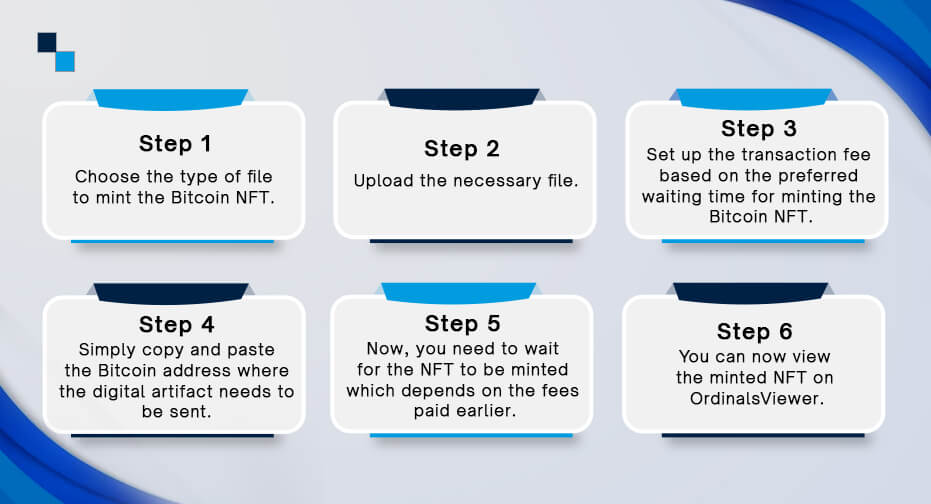
Buying and Selling Bitcoin NFTs
At the time when you plan to buy Bitcoin NFTs, you need to make sure to use wallets that are Taproot compatible like Ordinals Wallet, Hiro Wallet, or Xverse Wallet. Check out the steps to use Ordinals Wallet for buying Bitcoin NFTs.
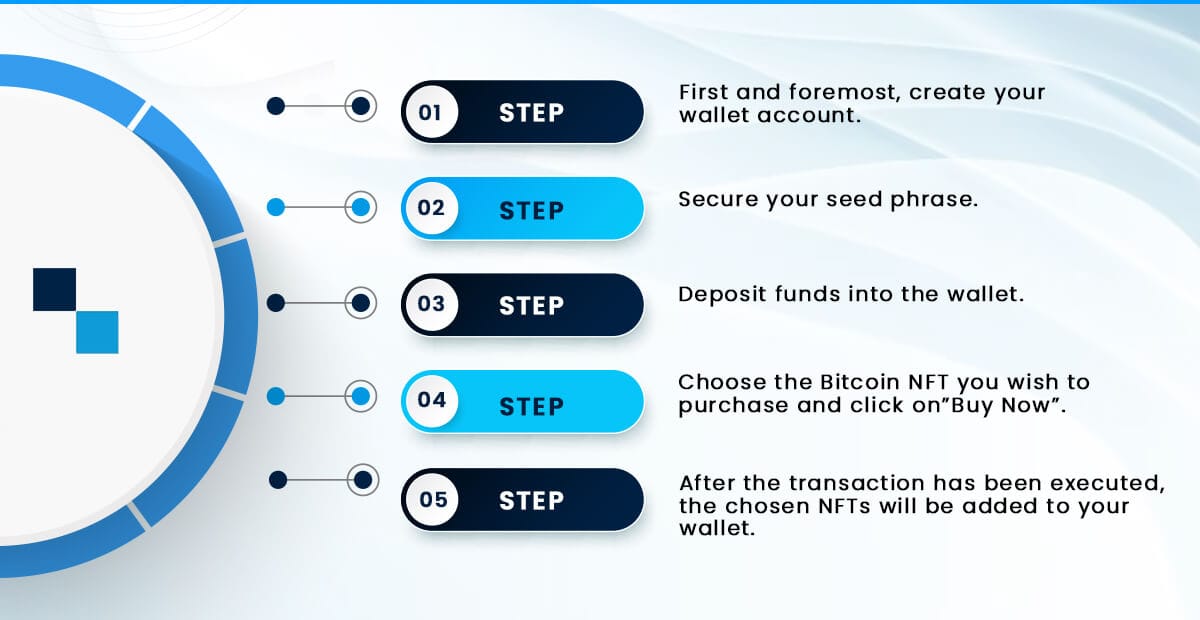
Selling Bitcoin NFTs is somewhat similar to the process of buying. Again, you need to select a wallet that is compatible with Taproot and download it. Then simply follow the steps below to get your Bitcoin NFT sold.

Opportunities Offered by Bitcoin NFTs
The rising popularity of Bitcoin NFTs opens up a lot of opportunities. The inclusion of sizable storage of data along with assured availability opens up a wide range of use cases. However, many of these use cases are in the beginning stage of exploration including a lot of things such as new types of decentralized software, Bitcoin scaling techniques, NFTs for digital identity, tokenization of assets, etc.
In addition to this, the increasing block size of the Bitcoin blockchain makes it convenient for enterprises to create more products on the existing Bitcoin network. Moreover, the growth of inscriptions irrespective of whether as an NFT market or anything more will play a significant role in enhancing the rate of adoption of Bitcoin, which in turn can be supportive of BTCUSD.
The ripples of Bitcoin NFT have been far reaching which is proven from the fact that several globally renowned organizations have put their feet on it.
For instance, world famous automobile manufacturer Bugatti launched a Bitcoin NFT featuring a minimalist egg representation inspired by the quote from Carlo Bugatti: “The purest perfect shape of nature is the egg.”
PixelPepes very recently airdropped the iconic characters to early users of Ordinal Wallet. It was certainly a strategic move to bring about several new participants into the world of Bitcoin NFTs or Ordinals.

Closing Thoughts
It is true that we have seen massive hype around Bitcoin NFTs in the past few months. However, it will not be possible to comment on the future of Bitcoin NFTs or Ordinals at this point in time. With a lot of added features and functionalities, the future of Ordinals seems bright enough. Moreover, Ordinals come with the facility of storing media files on the Bitcoin blockchain which eliminates the need for third-party integration for storage of files like sound, images, GIFs, etc. This, in turn, will certainly prove to be beneficial for NFT programmers to reduce their effort at the time of designing NFTs along with boosting the rate of adoption of NFTs.
Bitcoin NFTs depict a significant as well as stimulating advancement in the domain of collectibles and digital art, thereby helping to present distinctive prospects for collectors, artists, and investors alike. With the expansion in the rate of adoption of Bitcoin NFTs, they certainly have the potential to bring about a revolution in our perception of digital art as well as its intrinsic worth. Therefore, it is very likely that the adoption of Bitcoin NFTs will rise in the time to come which in turn will play a crucial role in boosting Bitcoin in the near future.
